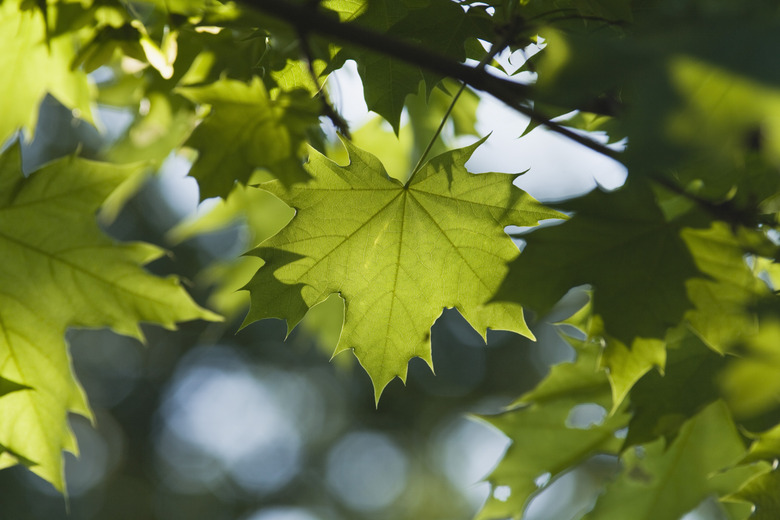Black Oozing Spots On The Trunk Of Our Maple Tree
Step 1
Bacterial wetwood results from an infestation of anaerobic bacteria that thrive in low-oxygen environments, penetrating the maple's inner wood. The germs enter the tree through damaged bark. Several bacterial species may infect the tree simultaneously. They form populations of wet tissue and spread over a period of years. Pressure increases in the maple's interior as the fermenting germ colonies release carbon dioxide. When pressure is high enough, it forces frothy fluid from wounds in the bark. The clear fluid darkens to brown or black with exposure to air.
Step 2
- Bacterial wetwood results from an infestation of anaerobic bacteria that thrive in low-oxygen environments, penetrating the maple's inner wood.
Damage
Step 1
Fluid can ooze for months at a time when warm weather stimulates the bacteria. Saturated bark decays, opening the maple's wood-producing cambium layer to further damage. Oozing branches may develop smaller, yellowing leaves. Crown foliage of severely affected trees sometimes scorches, yellows or curls before dropping prematurely in mid to late summer. Insects, fungi and other germs often infest affected maples to feed on the leaking material. The additional organisms sometimes worsen the fluid's odor. They also give it a slimy texture. The coating interferes with the tree's ability to build wound-protecting calluses. Leaking fluid may also kill grass or other nearby vegetation.
Step 2
- Fluid can ooze for months at a time when warm weather stimulates the bacteria.
- Insects, fungi and other germs often infest affected maples to feed on the leaking material.
Management
Step 1
There is no proven cure for bacterial wetwood. Traditional treatment has been to drill upward-angled holes from 6 to 14 inches below a tree's diseased wood. The holes penetrate within a few inches of the branch or trunk's opposite side. Inserting threaded, 3/8- to 1/2-inch drain tubes made of iron or rigid plastic into the holes can drain the trapped fluids, the same way that sap drains from tapped sugar maples. The tubes' exposed ends should clear the tree's root crown and trunk to prevent more contamination. Spring pruning and disposal of dead branches, as well as applying disinfectant shellac on infected pruning cuts, provide additional control.
Sooty Mold
Step 1
A second infection, sooty mold, also causes black patches on maple trees. This disorder occurs on trees already infested with aphids or other leaf-sucking pests. The insects produce sweet, sticky clear waste called honeydew, on which the fungus feeds. Honeydew that drips from the leaves onto the maple's branches and trunk can attract sooty mold patches. The infection may resemble bacterial wetwood-related darkening from a distance. Its velvety texture becomes obvious with close inspection. Sooty mold remains on the tree's surface, can be removed easily with water and disappears with insect elimination.
Step 2
- There is no proven cure for bacterial wetwood.
- Traditional treatment has been to drill upward-angled holes from 6 to 14 inches below a tree's diseased wood.
References
- Journal Of Arboriculture: "Wetwood and Slime Flux in Landscape Trees"; W. Douglas Hamilton; September 1980
- University of Illinois Extension Integrated Pest Management: Bacterial Wetwood and Slime Flux of Landscape Trees
- Alabama Cooperative Extension Service: Slime Flux (PDF)
- North Carolina State University Extension: "Slime Flux/Wet Wood Ornamental Disease"; Tom Creswell, et al.; June 2007
- Ohio State University Extension FactSheet: Sooty Molds on Trees and Shrubs
